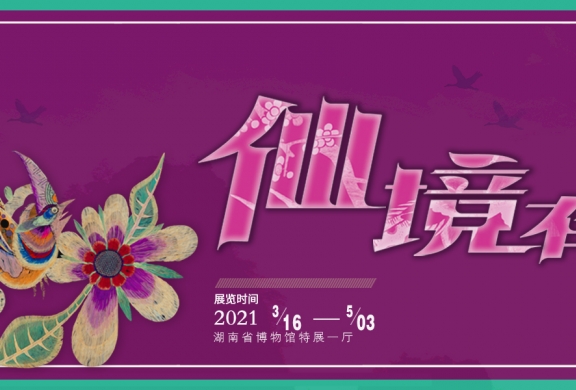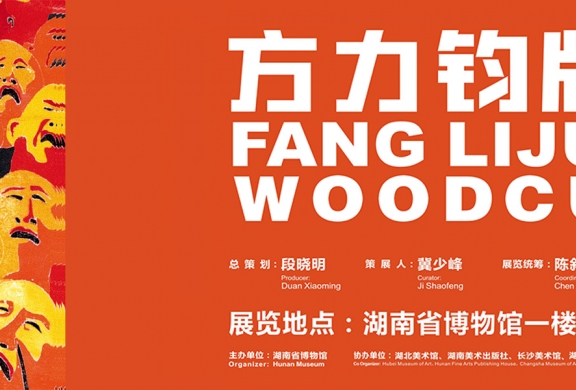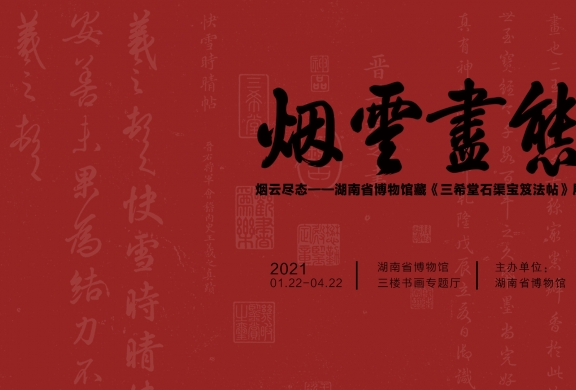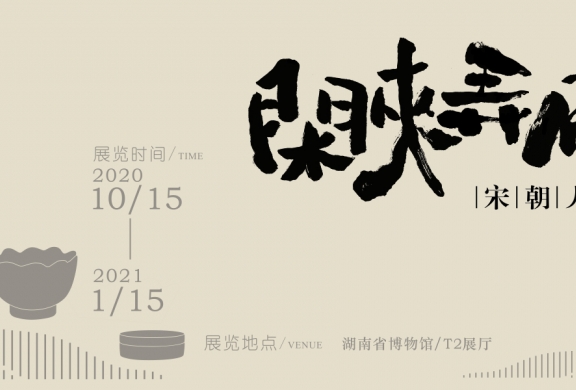Past Exhibitions
Figure paintings and culture integration in the Ming and Qing DynastiesNo.2 Special Exhibition Hall, 1F 2021.03.08 - 2021.06.18 Confucianism, Taoism and Buddhism are regarded as three complementary knowledge systems and cultural sources of Chinese traditional culture. From the Pre-Qin Period to the Han Dynasty, they have developed from mutual exclusion into absorption, and then into the overall integration while moving towards unity via continuous historical interactions. Later, during the Ming and Qing Dynasties, the Three Teachings integrated their philosophies in material forms when keeping respective traditions alive. The integration was best manifested by the popularity of figure paintings, statues, sculptures, and literary images. As interrelated visual cultures, the artworks serve as an overview of the important historical features of social culture, aesthetic taste, as well as the secularized and normalized spiritual life in the Ming and Qing Dynasties. Rooted deep in history like “cultural genes”, they have influenced China and even the whole Oriental culture in a universal and profound way. Chinese people believe that “The sea receives all rivers; Utmost wit listens to all sides”. As we can see, in the Ming and Qing Dynasties, Confucianism, Taoism and Buddhism’s maintenance of relative independence and the state of confluence is also made possible by their pursuit of openness, inclusiveness, and harmonious coexistence. Meanwhile, the internal transcendence embodied in the integration and development of the Three Teachings endows Chinese culture with a character of seeking self-innovation and being in tune with the times, which has become the cultural code for it to grow and prosper for thousands of years. It is hoped that this exhibition can provide people with an opportunity to look back on the cultural origin of the Chinese nation and explore the contemporary value of outstanding traditional culture, thus separating the wheat from the chaff and making the past serve the present. With this in mind, we can build a social consensus on and inject spiritual momentum for developing Chinese culture and practicing socialist core values. |
Blossoms in Fairyland-Exhibition of the Taoyuan Embroidery in the Qing Dynasty and the Republic of China PeriodNo.1 Exhibition Hall, 1st Floor 2021.03.06 - 2021.05.03 Blossoms in Fairyland-Exhibition of the Taoyuan Embroidery in the Qing Dynasty and the Republic of China period is one of “Taoyuan Craftsmanship” series exhibition, which presenting the embroidery works. The series exhibition including embroidery and wood carving two parts is jointly hosted by the Hunan Museum and the Taoyuan County government. It is the first exhibition jointly held by the Hunan Museum and a local government. The series exhibition of “Taoyuan Craftsmanship” starts with the Taoyuan embroidery and wood carving in the Qing Dynasty and the Republic of China period, aiming to reflect the profound Huxiang regional civilization. It is the first work of “Hunan Regional Civilization Series” exhibition held by the Hunan museum. Blossoms in Fairyland-Exhibition of the Taoyuan Embroidery in the Qing Dynasty and the Republic of China period carefully selected more than 170 pieces (sets) of Taoyuan embroideries from public and private collections in the Qing Dynasty and the Republic of China period. With the visual display of the subjects, patterns, skills, techniques and functions of embroideries, the exhibition aims to accurately interpret Taoyuan embroidery's exquisite skills, profound attainments, unique artistic characteristics and long-standing folk customs and rituals, interpret the unique aesthetic taste of the people in Taoyuan area, and glimpse the industrious wisdom and spiritual pursuit of the people in Hunan Area in the process of creating a better life, so as to help visitors to appreciate the unique charm of Hunan regional culture. |
Fang Lijun’s WoodcutsNo.1 and No.2 Exhibition Hall, 1st Floor 2021.01.26 - 2021.03.01 In order to meet the increasingly growing spiritual demand of people and fulfill the social responsibility as a large history and art museum, the Hunan Museum is now planning a series of modern and contemporary art exhibitions,highlighting different genres of artifacts and revealing profound history of cultures, finally form a comprehensive exhibition system. The exhibition of Fang Lijun Woodcuts adopts the case study approach and is based on the timeline of works. It well reflects the artistic exploration of Fang at different stages through 132 pieces of woodcuts ranging from the initial one made in 1982 to the lately completed one in 2020. This exhibition is not only a review of Fang’s works over the past 38 years, but also a supreme epitome of development process of contemporary art as well as the growth stages of artists in contemporary China. Fang’s works are divided into 4 phases: 1.vagueness (1982-1984), 2.silence(1985-1994), 3.awakening(1995-1998), 4. breakthrough(1999-today). Although woodcuts are the very beginning of his art career and the origin of his inspiration, his relevant works are much less known to the public than his oil paintings, which are regarded as a symbolic expression in Chinese contemporary art. This exhibition will make up for it and enable us to have an all-rounded understanding about Fang’s artistic achievements. Fang’s works cover oil paintings, woodcuts, ink and wash paintings, art installations and ceramic works etc, some of which have already become cultural symbols with connotation of certain age and have gained international influence. His woodcuts featuring big structure, huge field and large scale expand the concept and language of woodcuts, highlight the characteristics of things described, revealing an artistic tension and epochal significance via visually shocking images and unique way of thinking. Therefore, they well demonstrated the global perspective as well as the sense of responsibility of Chinese contemporary artists in promoting cultures. |
Exhibition of the Sanxitang Shiqubaoji Model Calligraphy3rd Floor 2021.01.19 - 2021.04.22 The Sanxitang Model Calligraphy was carved in 1747. Emperor Qianlong ordered officials including Liang Shizheng and Jiang Pu to carefully select from, copy and carve the famous calligraphy works of various dynasties in Shiqubaoji, which took them 7 years. The model calligraphy got its name because it contains Emperor Qianlong's three favorite calligraphy works – A Sunny Scene After a Quick Snow by Wang Xizhi, Mid-Autumn by Wang Xianzhi and Letter to Boyuan by Wang Xianzhi – all of them were collected in Sanxitang, the West Warm Room of Yangxin Hall. After the Sanxitang Model Calligraphy was engraved, Emperor Qianlong specially built Yuegulou Building in Beihai Park to store these stone carvings. He also entitled “Yan Yun Jin Tai” (calligraphy of different forms) and a seven-character poem, which shows how much they were treasured. The Sanxitang Model Calligraphy contains works from the Wei and Jin dynasties to the end of the Ming Dynasty, including almost all the excellent calligraphy scripts in the Ming Dynasty, such as Tingyunguantie and Yugangzhaitie. Some of the original scripts have been destroyed or lost, such as Zhong Yao’s Jianjizhibiao, Wang Xianzhi’s Songlitie, and Zhao Mengfu’s Wanshanfu. Fortunately, with the Sanxitang Model Calligraphy, we can see the copies of them. With numerous volumes, strict selections, excellent carving copies and large scales, the Sanxitang Model Calligraphy is of great historical, artistic and academic value. With a collection of works from 135 masters, 340 pieces of calligraphy, more than 200 prefaces and postscripts, over 1600 seals, 32 classifications, 495 pieces of stone carvings and more than 90,000 characters of inscriptions, it is one of the best calligraphy stone carvings. Hunan Museum has a rich collection of paintings, calligraphy and inscriptions. At the beginning of the new year, we carefully selected the collection of the Sanxitang Model Calligraphy series and planned this exhibition for visitors, from whom valuable suggestions are welcomed. |
Enjoy the Elegance at Leisure: the Slow Life of the People in the Song DynastyNo.2 Special Exhibition Hall, 1F 2020.10.15 - 2021.01.15 Most of the literati and scholars of the Song Dynasty were well educated in poetry and books, and had the desire to both help the world and be virtuous. The peace and humility in Confucianism, the purity and naturalness in Taoism, and the philosophy of finding one’s true self in Buddhist, enabled them to live with the ease of mind whether in the times of the success or frustration. They did not pursue power and wealth; instead, they valued the taste and entertainment of life while knowing the meaning of their lives. As senior officials, they would "worry first and enjoy later", displaying their ambition of governing the country and unifying the world; in the face of the ups and downs of life and career, they would "not be pleased by external gains nor saddened by personal losses", but rather, they pursued inner peace. In their spare time, they would relax their mind, indulge themselves in nature and enjoy and contemplate life. Playing the Guqin and chess, writing and painting, drinking tea and wine, arranging flowers and burning incense, and gathering to appreciate the antiques, as elegant life paradigms and cultural phenomena, have been admired and emulated by generations to come. The literati and scholars of the Song Dynasty had lived up to our ideal model of life more than a thousand years ago. |
Ancient Peru Civilization: Exploring the Origin of the Inca EmpireNo.1 Exhibition Hall, 1st Floor 2020.09.23 - 2021.01.05 In the far west of South America, on the other side of the Pacific Ocean, lies a mysterious country called Peru, where the Andes Mountains run from the north to the south, forming a unique natural ecological environment that has nurtured generations of indigenous Indians and later immigrants, creating a splendid and fascinating ancient civilization. Ancient civilization in Peru has a long history. Since the arrival of the Asian Mongoloids across the Bering Strait 13,000 years ago, it had been developing over a long period of time and eventually culminated in the establishment of the Inca Empire, which marks the pinnacle of the development of ancient Peruvian civilization and that of the Andean region as a whole. Although the Inca Empire, with Peru at its center, was lost to the Spanish colonial invaders in the 16th century, the influence it has left on the history of human civilization and the memory of the Indians about their their ancestors, will endure. To this day, in the majestic megalithic structures, exquisite textiles, colorful pottery, and exquisite gold and silver objects, we can still see the magnanimity and courage of the founders of Peruvian civilization, and feel the resilience and spirituality of their people, as well as their devotion to their gods and spirit. Let's travel through time and space. Through the 157 pieces of artifacts in the exhibition, let’s experience the brilliance and splendor of Peru's ancient civilization and discover the exciting Inca Empire... |








